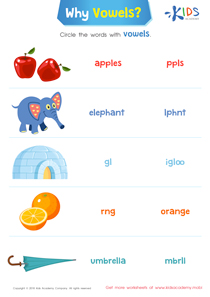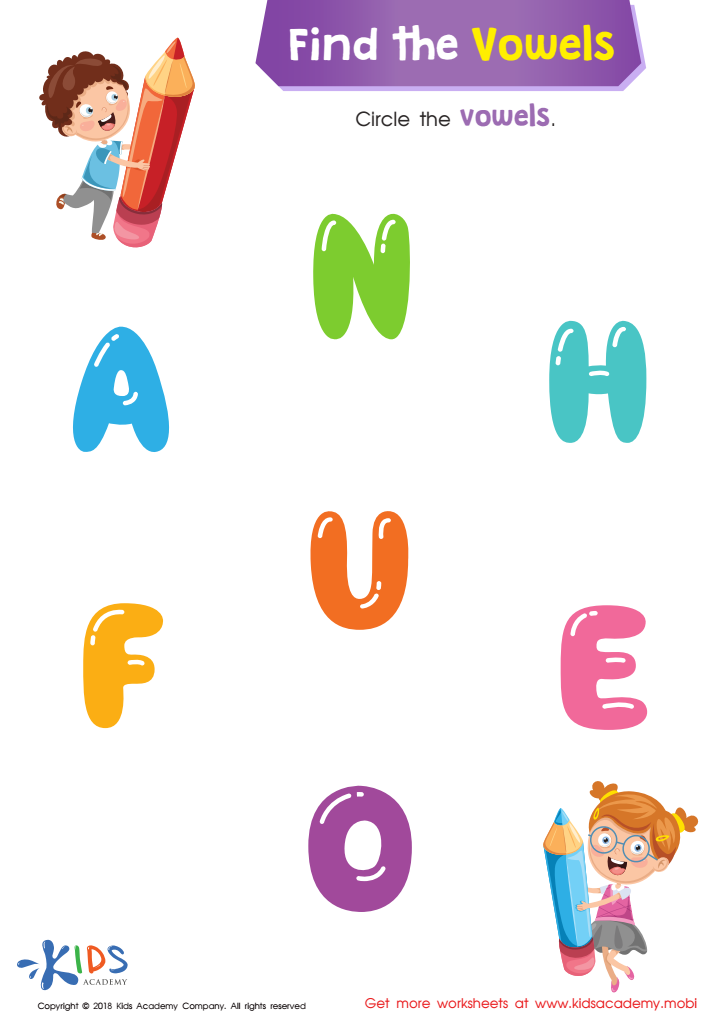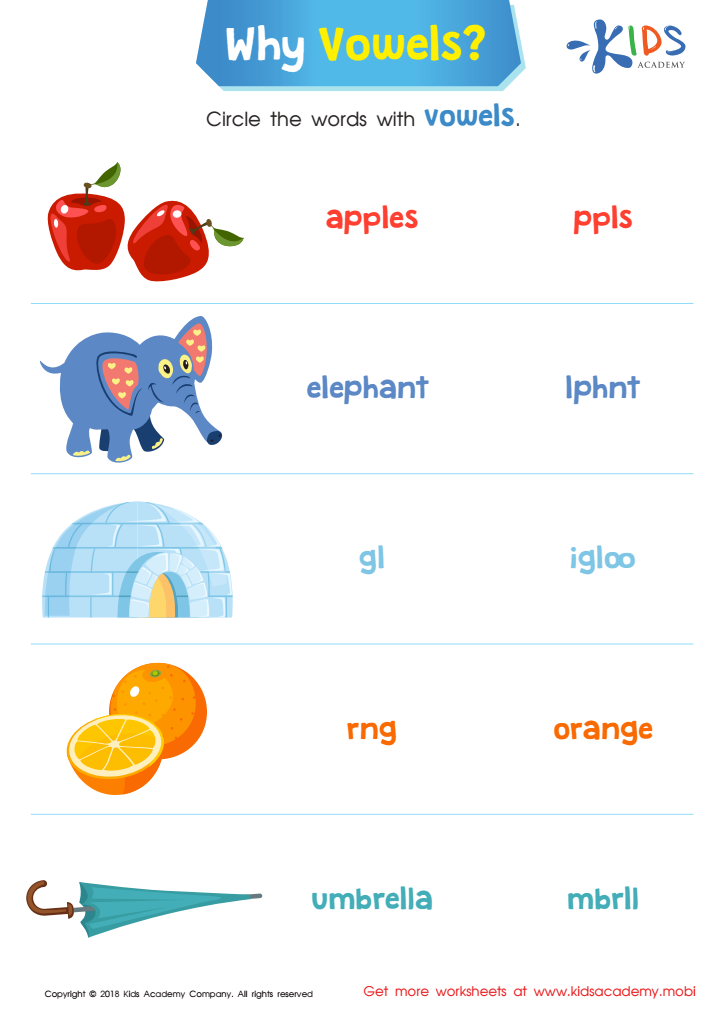Identifying Vowels - Lesson for Kindergarten, Chapter - Letter Sound Relationships
In the lesson "Identifying Vowels," Kindergarten students will embark on an exciting journey to discover and understand the critical role vowels play in reading and writing. This lesson, nestled within the "Letter Sound Relationships" chapter of the "Early Phonics and Phonological Awareness" unit, provides foundational skills essential for budding readers and writers.
Through engaging activities such as the "Find the Vowels Reading Worksheet" and the "Why Vowels? Reading Worksheet," students will learn to identify the vowels (A, E, I, O, U) and recognize their unique sounds within words. This lesson not only introduces the students to the vowels but also explains why vowels are indispensable in creating syllables and words, making it a crucial stepping stone in their literacy development.
Understanding and identifying vowels is important because it aids in the development of phonological awareness—an essential skill for decoding words. This awareness allows students to manipulate sounds, leading to improved reading fluency, comprehension, and eventually, the ability to write and spell words correctly. By mastering vowel sounds and their significance, students lay a solid foundation for their ongoing literacy journey, setting them up for success in reading and writing tasks in their academic future and beyond.


-
Activity 1 / Find the Vowels Reading Worksheet
Vowels take on various sounds in words, and yet, they’re pivotal to nearly every word children will read. With this brightly colored and engaging worksheet, they will use their visual discrimination skills to identify vowels, and they’ll work on their fine motor skills as they circle each vowel they discover. Young learners will find it easy to experience success, and they’ll be motivated to ‘read’ more!
-
Activity 2 / Why Vowels? Reading Worksheet
Vowels are important parts of nearly every word, and when beginning readers use their sounds to spell, they often leave vowels out. This engaging worksheet is full of familiar pictures children will recognize, and give them the opportunity to choose the appropriate spelling of the word by including the vowels. They’ll practice their fine motor skills as they circle the correct spelling of each picture.






